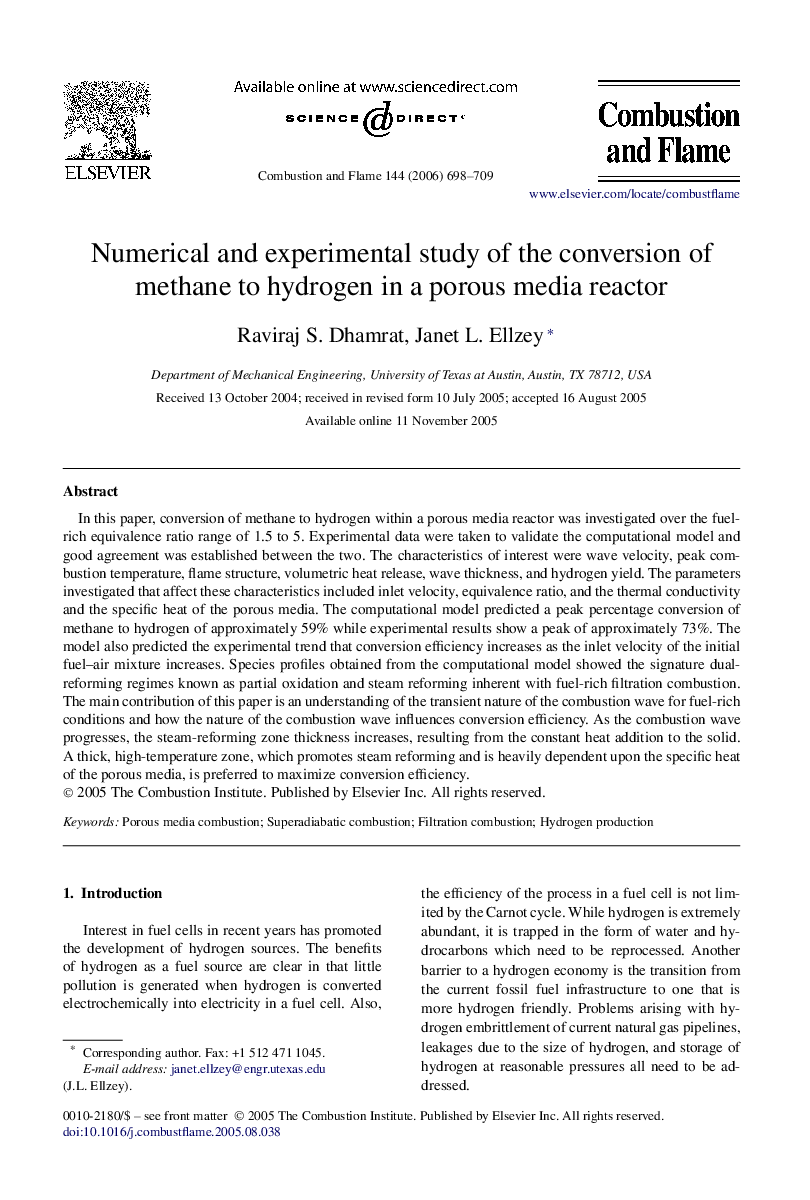| Article ID | Journal | Published Year | Pages | File Type |
|---|---|---|---|---|
| 170203 | Combustion and Flame | 2006 | 12 Pages |
In this paper, conversion of methane to hydrogen within a porous media reactor was investigated over the fuel-rich equivalence ratio range of 1.5 to 5. Experimental data were taken to validate the computational model and good agreement was established between the two. The characteristics of interest were wave velocity, peak combustion temperature, flame structure, volumetric heat release, wave thickness, and hydrogen yield. The parameters investigated that affect these characteristics included inlet velocity, equivalence ratio, and the thermal conductivity and the specific heat of the porous media. The computational model predicted a peak percentage conversion of methane to hydrogen of approximately 59% while experimental results show a peak of approximately 73%. The model also predicted the experimental trend that conversion efficiency increases as the inlet velocity of the initial fuel–air mixture increases. Species profiles obtained from the computational model showed the signature dual-reforming regimes known as partial oxidation and steam reforming inherent with fuel-rich filtration combustion. The main contribution of this paper is an understanding of the transient nature of the combustion wave for fuel-rich conditions and how the nature of the combustion wave influences conversion efficiency. As the combustion wave progresses, the steam-reforming zone thickness increases, resulting from the constant heat addition to the solid. A thick, high-temperature zone, which promotes steam reforming and is heavily dependent upon the specific heat of the porous media, is preferred to maximize conversion efficiency.
